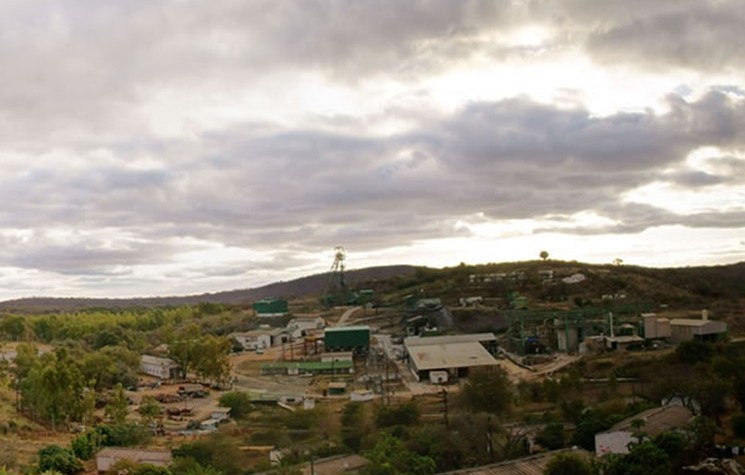Steady As She Goes For Caledonia Mining’s Expansion Plan At Blanket

By Alastair Ford
It’s been a slightly bumpy ride for Caledonia Mining shareholders over the past year or so, and with that in mind the company is planning regular updates in regards to its expansion plans at the Blanket gold mine in Zimbabwe.
“Every quarter or so we’re going to be putting out a press release”, says chief financial officer Mark Learmonth. The thinking is that a steady stream of positive news about progress towards the 75,000 to 80,000 ounce per year target will reassure a market that is no longer in love with gold companies, as the gold price fluctuates and other sectors come back from prolonged periods in the doldrums.
But Caledonia’s got one thing going for it that most other gold juniors don’t have: the luxury of a significant cash pile. That’s allowed it significant room for manoeuvre as it works to boost production from the current rate of just over 40,000 ounces annualised.
The plan is to pay for the US$50 million expansion from cash generated directly by the Blanket operating subsidiary, which is held in partnership with local Zimbabwean community and business interests. The plan holds good as long as gold trades at between US$1,200 and US$1,250 per ounce or higher.
Any lower, and Caledonia would have to look at other options. But even then it’d be unlikely that it would dip immediately into its own cash pile, which at the last reporting date, for the quarter ended September 2014, stood at nearly US$28 million.
“Expansion is funded out of cash flow at between US$1,200 and US$1,250”, says Mark. “If the gold price fell we’d need to take on some more debt locally, and indeed the local debt markets in Zimbabwe are opening up.”
So, expansion will be paid for firstly out of existing cash flow, and then if there’s a shortfall, with debt, and only lastly by resort to Caledonia’s own cash pile. That multilayered level of financial support for the expansion is what’s known as strength in depth. And it’s because of that strength in depth that Caledonia has been able to pay a chunky dividend over the past few years, and aims to keep on paying it.
“In extremis”, says Mark, “Caledonia can make good any funding gap.” But it would be quite a set of circumstances. According to the company’s own calculations, if the gold price had dropped to US$1,000 on 1st January this year and stayed there, funding for the expansion would still have been viable. And although forecasting the gold price outlook is not the relentless preserve of the bulls it once was, there has been no sign at all of any drop towards US$1,000 in recent years.
What’s more, once the plan has been implemented, the company will be able to survive a gold price at significantly weaker levels.
So the financial situation is sound. What about the implementation? On that score, it’s steady as she goes.
Nearly half of the new tramming loop on the 750 metre level has been completed, and final completion is on schedule for June. The winders for the No. 6 Winze have been installed and commissioned, and new winders acquired for the new central shaft, where pre-sink work is expected to commence in July 2015.
“The winders are important”, says Mark. “They are a critical thing. If we don’t have the winders we aren’t going to sink this shaft. The first one should get up there in a couple of months.”
He’s pleased with the price he’s paid too – US$1.6 million. “It’s cheap. But one of the benefits we face is that as the South African mining industry falls on its sword you get all sorts of stuff coming onto the market. But you have to move quickly. If we’d wanted the winders made it would have cost US$10 million.
Meanwhile, the business environment inside Zimbabwe seems to be becoming increasingly benign. Mark says that he and Caledonia’s chief executive Steve Curtis have spent quite a lot of time in Harare of late, and been quite encouraged by what they saw.
“We met the governor of the reserve bank, the minister for mines and the finance minister. There’s been a very striking change. We got a very strong sense that they are keen to see us and gold miners in general recover.”
And it’s not just talk. The royalty rate has been cut from seven per cent to five per cent. And the selling discount to the state-owned gold monopoly has been cut to one per cent.
“You show me a country in the world where taxes don’t go up and up”, says Mark. And he’s got a point. “The Zimbabweans are doing what they can and it’s appreciated”, he says. “We’ve got a strong sense that perceptions are going to change about Zimbabwe.”
But whether perceptions change or not, Caledonia is getting on with the job. “All we want to do in the course of 2015 is deliver the plan”, says Mark. Keep your eyes peeled for further updates.

Comments (0)